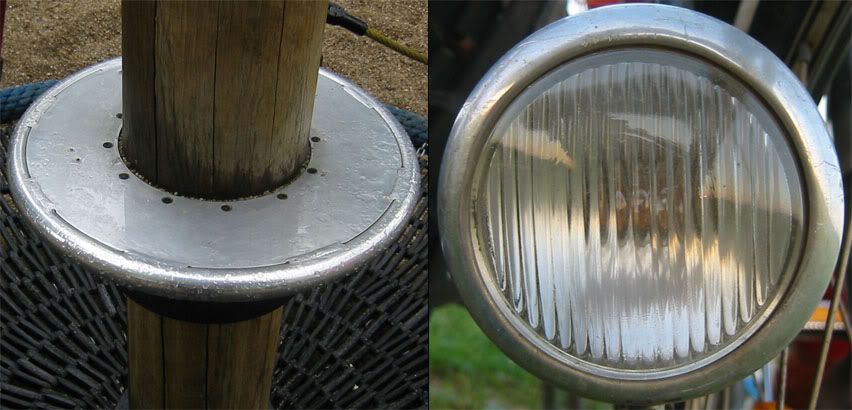+++ Maxwell Metals Materials are to simple +++
Posted: Sun Oct 16, 2005 11:51 am
Hi,
befor I start my critics on the Maxwell Metals, I make a conclusion of the other critics:
- plastic materials need a IOR parameter
- plastic materials need a blur fallof of the roughness
- diffuse materials need a rouhness parameter
My new thesis: metals need a special diffuse component. This special metal diffuse is something between diffuse and a very blur reflection. The reason for this effect is not a roughness, it are oxidation and other surface effects.
I attach two examples of real life aluminium. I miss this effect in Maxwell very much. The Maxwell metals are only fresh perfect polished Metals (with a roughness of fine sand paper if the user like). If Maxwell try to be a physical correct render engine, than it should not use so simple materials like now implemented.

Here an example of metal shader of AIR. In this selfwriten shader I have used a layer of diffuse metal. It is a modified diffuse function. The important difference between the standard diffuse and the metall diffuse is, that the metal diffuse samples a hemisphere area in reflection direction. In renderman code it looks like this:
standard ...
Interesting for me was, if I change the contrast of the metal diffuse layer, than I get a car paint effect like here:

At the moment I find only one first aid for aluminium look - the plastic shader. This materials seems to use a metal fresnel function, so I can use an additional grey diffuse component. This looks not real, but better than the clean standard aluminium material.
I'm very curious on the final release. I hope to see more real materials.
befor I start my critics on the Maxwell Metals, I make a conclusion of the other critics:
- plastic materials need a IOR parameter
- plastic materials need a blur fallof of the roughness
- diffuse materials need a rouhness parameter
My new thesis: metals need a special diffuse component. This special metal diffuse is something between diffuse and a very blur reflection. The reason for this effect is not a roughness, it are oxidation and other surface effects.
I attach two examples of real life aluminium. I miss this effect in Maxwell very much. The Maxwell metals are only fresh perfect polished Metals (with a roughness of fine sand paper if the user like). If Maxwell try to be a physical correct render engine, than it should not use so simple materials like now implemented.

Here an example of metal shader of AIR. In this selfwriten shader I have used a layer of diffuse metal. It is a modified diffuse function. The important difference between the standard diffuse and the metall diffuse is, that the metal diffuse samples a hemisphere area in reflection direction. In renderman code it looks like this:
standard ...
Code: Select all
metals ... diffuse(N)Code: Select all
diffuse(R)
Interesting for me was, if I change the contrast of the metal diffuse layer, than I get a car paint effect like here:

At the moment I find only one first aid for aluminium look - the plastic shader. This materials seems to use a metal fresnel function, so I can use an additional grey diffuse component. This looks not real, but better than the clean standard aluminium material.
I'm very curious on the final release. I hope to see more real materials.


